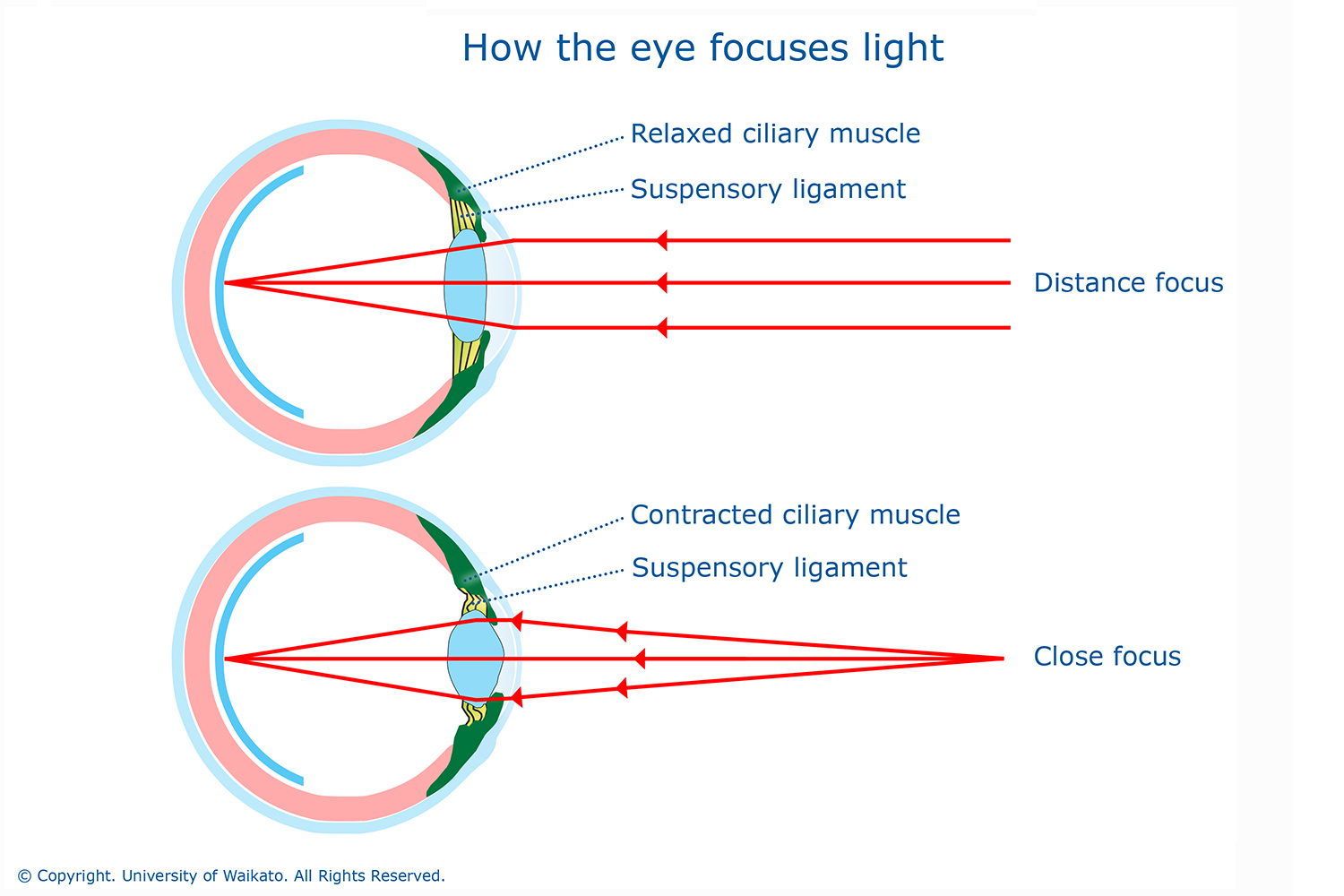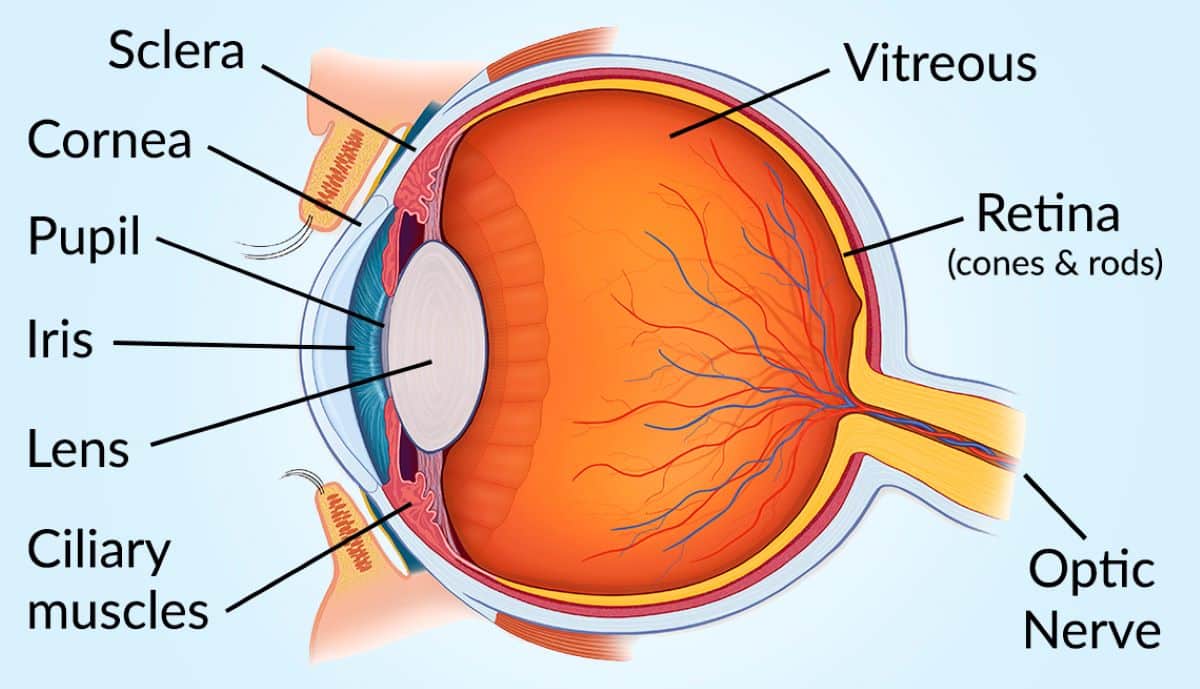How Far Can the Human Eye See?
The Detection Threshold of Single PhotonsPermalink
The human retina is capable of detecting single photons of light, known as the threshold of absolute vision. However, our brain is not informed of each individual photon that hits our retina. Selig Hecht and colleagues conducted experiments that found we require a minimum of 5 to 14 photons to be absorbed by our retinal rod cells within a short period of time to consciously perceive a flash of light. This amounts to just 5 to 14 chemical events triggering a visual perception.

Seeing the Faintest of LightsPermalink
Considering this absolute threshold, scientists have calculated how faint an object can appear yet still be visible. A candle flame 30 miles away would provide just enough photons hitting our eyes within milliseconds to be perceivable as a faint twinkle against the night sky. Although point-like at such distances, its dim glow could still stimulate our light receptors.
Resolving Spatial Extent Beyond Points of LightPermalink
For an object to appear as more than a singular point of light, it needs to stimulate adjacent color receptors in our retinal cones. This requires the object subtend an angle of at least one arcminute. The unaided eye can just resolve the planet Venus as extended rather than a point at this size. Spatially extended objects like cars would be discernible as two sources of light from under 2 miles away.
Seeing the Farthest Reaches of the CosmosPermalink
If a sufficiently luminous celestial body exists, in theory our eyes could perceive it across mind-bogglingly vast distances, even to the edge of the observable universe. Some claim to see the great Andromeda galaxy with the naked eye on a clear night. Over 2.5 million light years away, its trillion stars collectively give off enough photons to stimulate our retinas.
Glimpsing the Briefest of Cosmic FlashesPermalink
A brief but immensely energetic gamma-ray burst halfway to the visible universe’s boundary, labelled GRB 080319B, would have momentarily outshone the full moon had it occurred closer to Earth. Its fleeting but immense brightness illustrates naked-eye visibility depends more on luminance than distance alone.
Pushing the Limits of Naked-Eye VisibilityPermalink
The most distant resolved naked-eye star is typically said to be Rho Cassiopeiae 10,000 light years away, only discernible thanks to its extraordinary 500,000 times luminosity of our sun. Were a star 2 million times brighter than the sun, our eyes could theoretically perceive it from up to 20,000 light years with a clear view. Pushing the natural limits of human vision.
In SummaryPermalink
This overview has explored the incredible sensitivity of the human eye down to single photons, and examined the interacting factors of brightness, distance and visual angle that ultimately determine the depths of the cosmos we can glimpse unaided. From the faintest of night-sky lights to fleeting cosmic explosions, our eyes reveal the majestic grandeur of the universe through even its feeblest of glows.

